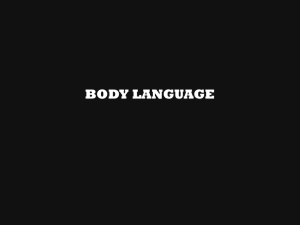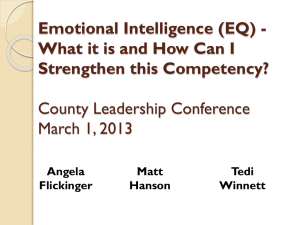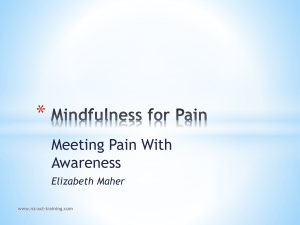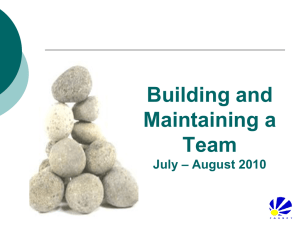Positivity for Productivity
advertisement
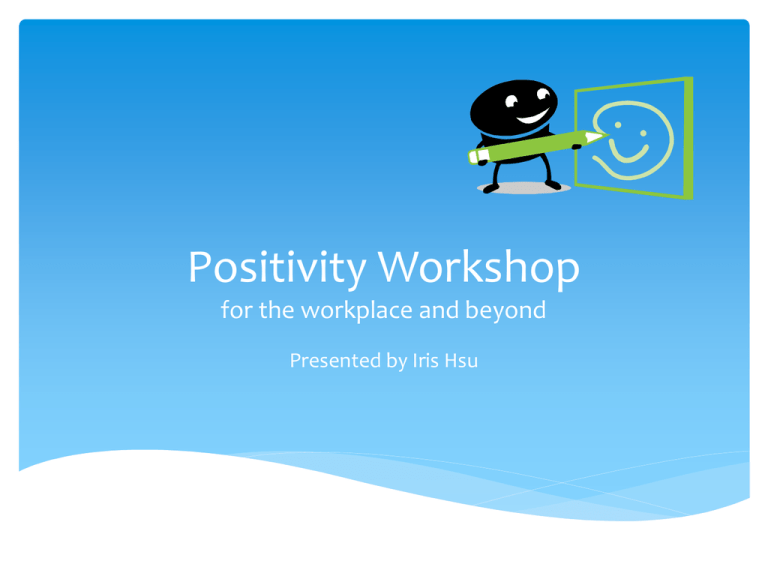
Positivity Workshop for the workplace and beyond Presented by Iris Hsu Introduction What is Positive Psychology? A scientifically-based study of human strengths, happiness, and thriving (living at maximum potential) Who founded Positive Psychology? With roots starting many decades ago, Dr. Martin Seligman (recent president of the American Psychological Association) made it the theme of his presidency. Where psychology previously focused on illnesses, Dr. Seligman believed in studying the scientific reasons for well-being and potential. It is the “bright” side of psychology. What is the Benefit in Understanding the Power of Positivity? In many ways, the “bad” can seem stronger than the “good,” so we must retrain our minds to focus on the positives to achieve our potential There is benefit to be reached in your career, your relationships, and your personal life satisfaction The Meaningful Life Eudaimonic Happiness: Expression and fulfillment of your inner potentials (daimon: true self, eudaimonia: happiness) Strongly related to feelings of: Challenge Competence Effort Opportunity for Personal Growth Opportunity for Skill Development (Baumgardner & Crothers 2009, p. 19) Positivity Your Health Emotions and Physical Health Multiple pathways and mechanisms that link emotions to well-being Positive emotional states contribute to the enhancement of our health resources Negative emotions cause depletion of health resources Emotions and Mental Health Positive emotions enhance resilience, which is the ability to bounce back from stressful events and regain composure and a sense of well-being Positive emotions can create an upward spiral of well-being, just as depression can create a downward spiral of negativity and pessimism (Baumgardner & Crothers 2009, p. 45) The Upward Spiral Negative Emotions Tend to narrow our thoughts When angry or fearful, we become self-focused and get tunnel vision Positive Emotions Opens up thinking to a wider array of possible actions (open-mindedness may result from decreasing less selffocused) Builds intellectual resources Results in an upward spiral Broaden Momentary ThoughtAction Experience Repertoires of Positive Emotions Build Enduring Personal Resources Transform People and Produce Upward Spirals (Baumgardner & Crothers 2009, p. 39-41) If Only I Had More Money … We talk about it, but can we really buy happiness? Studies shoes that people at every income level felt they would be happier if they were in the next higher income level. Does happiness really increase with income? Time Magazine study conducted in the US found that happiness and income increased until an annual income of $50k. After $50k, increased income resulted in no appreciable effect on happiness. A 50 year study by Diener and Seligman analyzed a 50-year trend in American GNP and our average life satisfaction. GNP tripled, while average life satisfaction stayed constant - flat line. (Baumgardner & Crothers 2009, p. 103) If Only I Had More Money …(cont.) Key Takeaways Money in and of itself is not a bad thing. We need it for daily living. BUT … Don’t fall for the concept that more income will buy you happiness. Focusing on money and materialism can lead to an emptier and less fulfilling life. Increasing dissatisfaction can lead to a downward spiral. You most likely make more than $50k. Studies show that you’re not going to be happier with more money. Do what you enjoy, grow, and be happy. (Baumgardner & Crothers 2009, p. 101-103) Coping with Stress Three Examples of Coping Methods 1. Problem-Focused Coping Behaviors directed at altering, reducing, or eliminating the source of stress Seeking concrete help Taking action to change a stressful situation Evaluating alternatives 2. Emotion-Focused Coping Attempt to change or reduce one’s own response to a stressful experience Seeking emotional support from others Venting in a productive manner Positive Self-Talk (i.e. stating the things for which you are thankful, skills you have, etc.) (Baumgardner & Crothers 2009, p. 46) Coping with Stress cont. 3. Proactive Coping Efforts to prevent stress from happening to start with Finishing work in advance Anticipating future issues and sources of stress and acting upon them in advance Positive Emotions as a Coping Resource When a positive attitude exists in difficult circumstances, the negativity is buffered Leads to more prevention ideas Leads to flexibility and creativity in problem solving (Baumgardner & Crothers 2009, p. 45) Summarizing the Benefits of Positivity Improved Mental Health Improved Physical Health Increased Problem-Solving Abilities Increased Life Satisfaction Increased Creativity Improved Relationships at Work and Home Increased Life Fulfillment Putting It Into Action: Venting Workshop Activity Emotion-Focused Coping We will try the “Venting” method Complete the next slide with the one item from work about which you really want to vent, and list details about the issue Don’t be shy! Express yourself freely in this productive manner. High-Level Ideas for Venting (but be specific when you elaborate) Processes Tools Bureaucracy Workload Venting Session Venting List: DCCP Tool crashes too much The choices don’t match the technology selected It doesn’t allow customer user entry Putting It Into Action: Reinventing Workshop Activity Making it Positive and Productive For every detailed issue you listed in the Venting Session, list a parallel action you can take to positively affect it These actions can be an attitude change, a suggestion to the team, taking ownership of a process problem, etc. Reinventing Session Venting List Tool crashes too much Reinventing List Enjoy the crashes as a feature! Laugh about it. Ask JJ’s team or developers to research tool stability. The choices don’t match the technology selected Constructively suggested changes to be implemented in DCCP or the future replacement tool. It doesn’t allow customer user entry. Constructively request this change to be implemented in DCCP or the future replacement tool. Take Action! In addition to what you learned today, please take action on your Reinventing List. Perhaps you can work with your manager to make it a performance goal or improvement objective. Keep feeding your positive emotions so that you can achieve an upward trend in productivity, healthy, and fulfillment. Thank you for participating! References Baumgardner, S. R., & Crothers, M. K. (2009). Positive Psychology. Upper Saddle River, NJ: Prentice Hall




